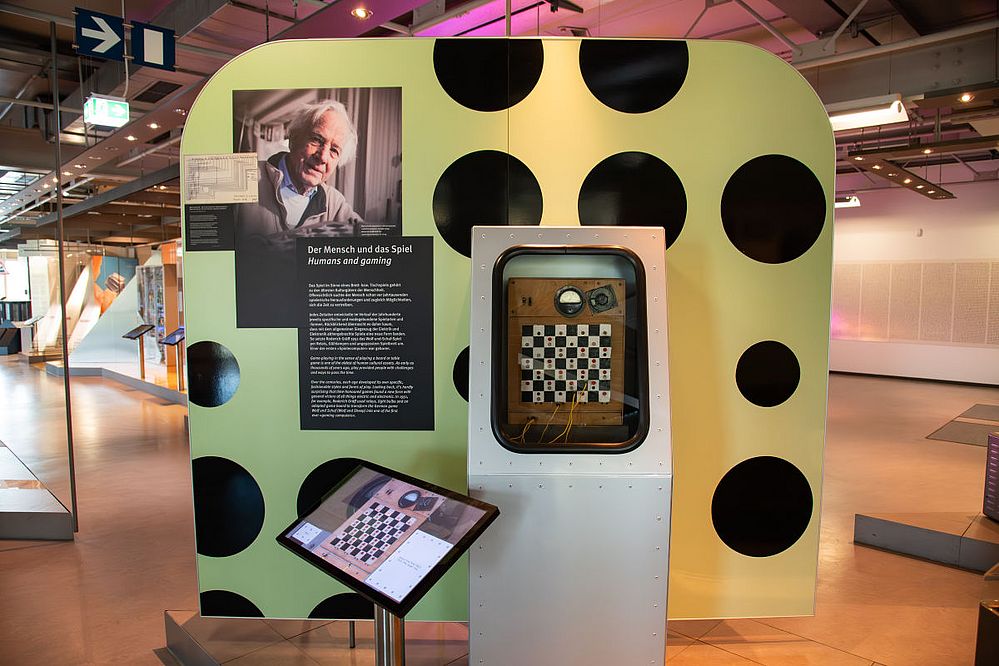In 1951, Roderich Gräff – a student of mechanical engineering at the Technical University of Darmstadt – designed the first “digital” game in Germany, based on the board game Wolf and Sheep, also known as Fox and Hounds.
On a chess board, four figures move diagonally on the black squares; they are the sheep. The opponent, the wolf, also moves on the black squares, but only forwards or backwards. The wolf has to break through the chain of four or circumvent it and reach the last row. If played tactically, the sheep always win; at the end of the game they trap the wolf.
57 relays
For his game, Roderich Gräff used 57 relays that he dismantled from old switchboards. This was not sufficient for a complete chess board and one row was missing. Only the white squares are used.
The human player represented the wolf; it was moved by plugging in three cables to sockets at the edge of a square. The machine is responsible for the sheep; their moves are shown by the white lamps. The wolf’s square is shown by the red lamps.
After completing his degree, Roderich Gräff ran a company that manufactured devices for plastics production. In 1968, German KOSMOS Verlag released the toy computer Logikus. The Logikus was battery-operated and had lamps like the wolf and sheep machine.
